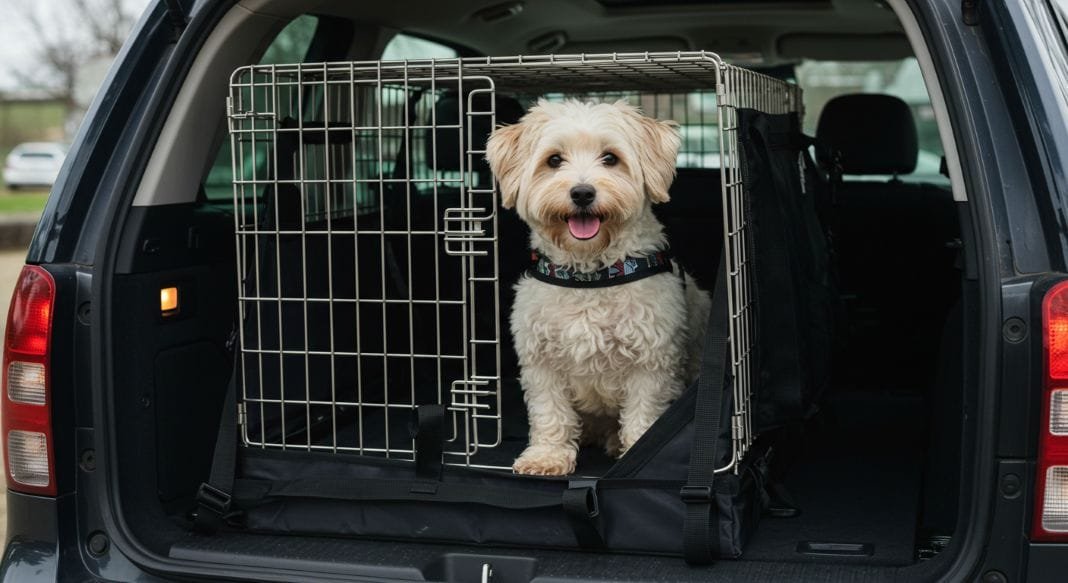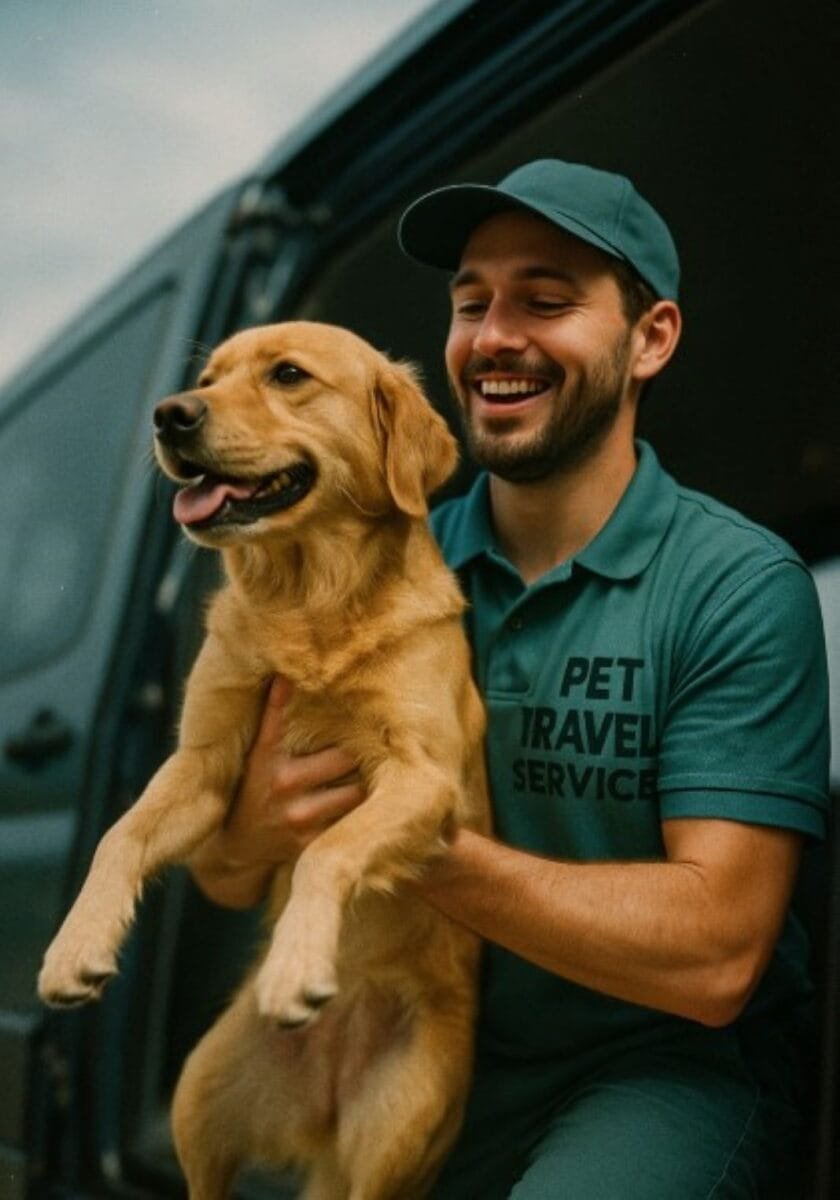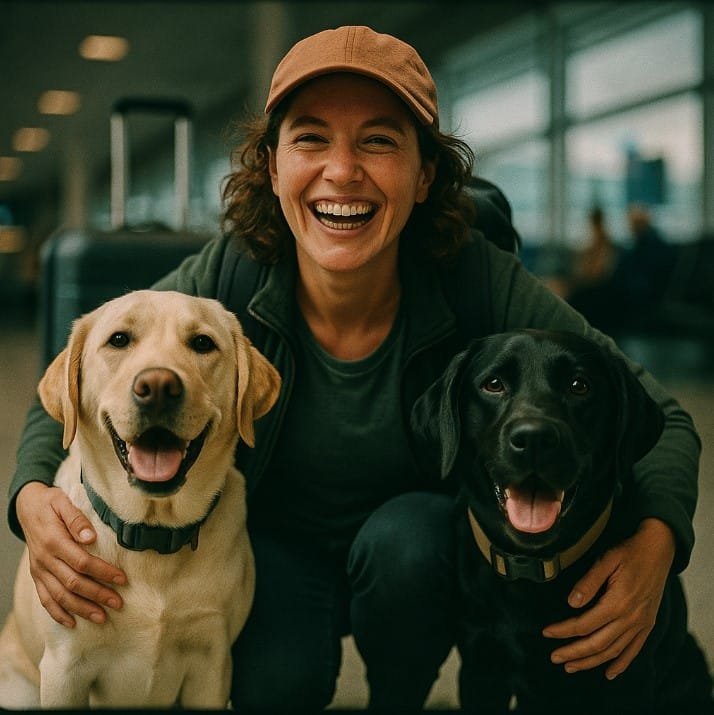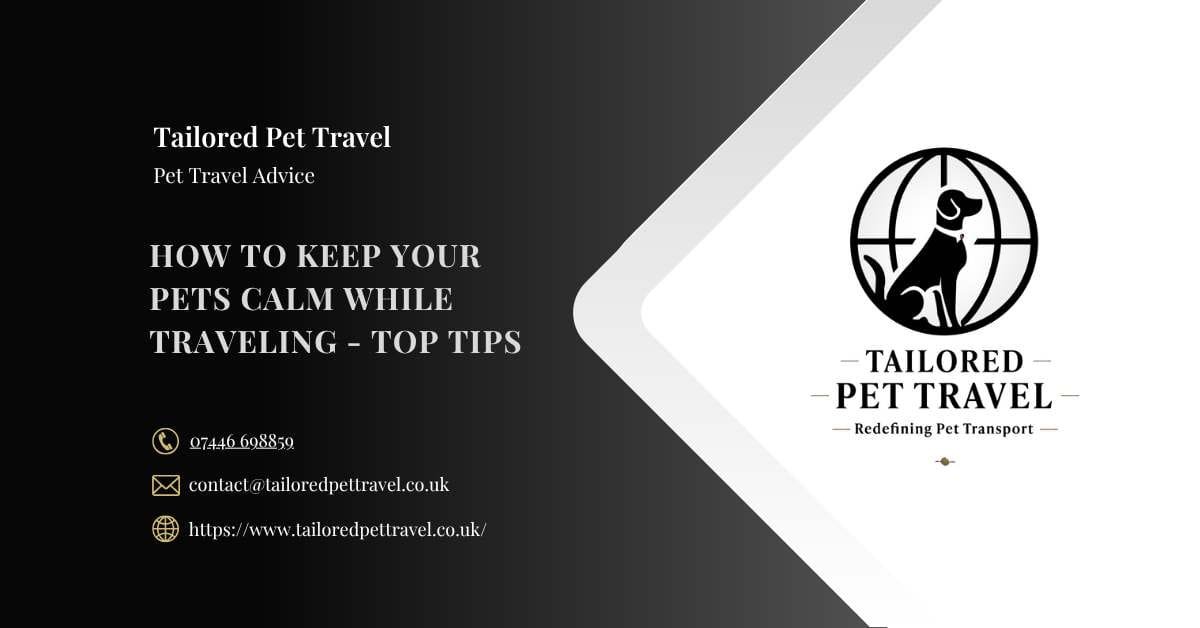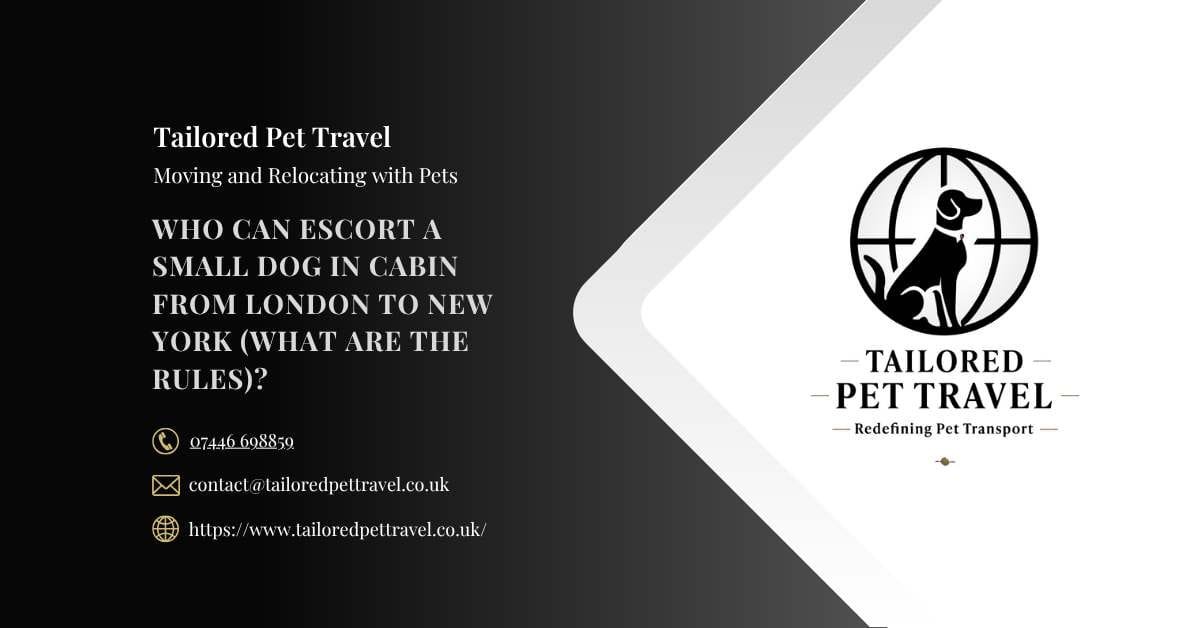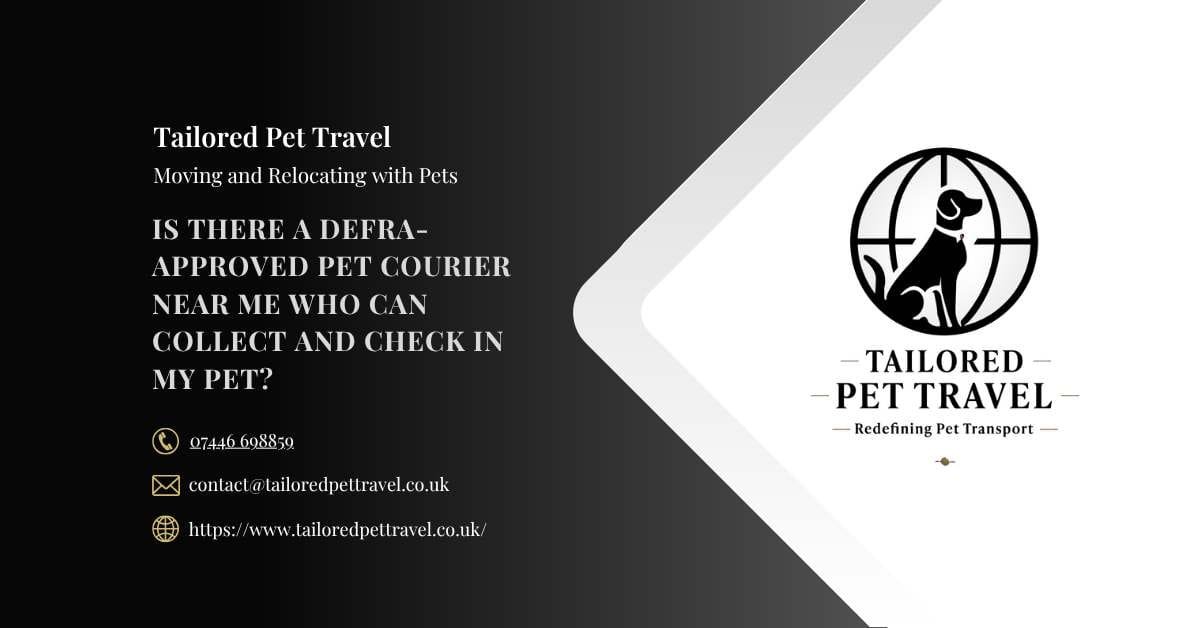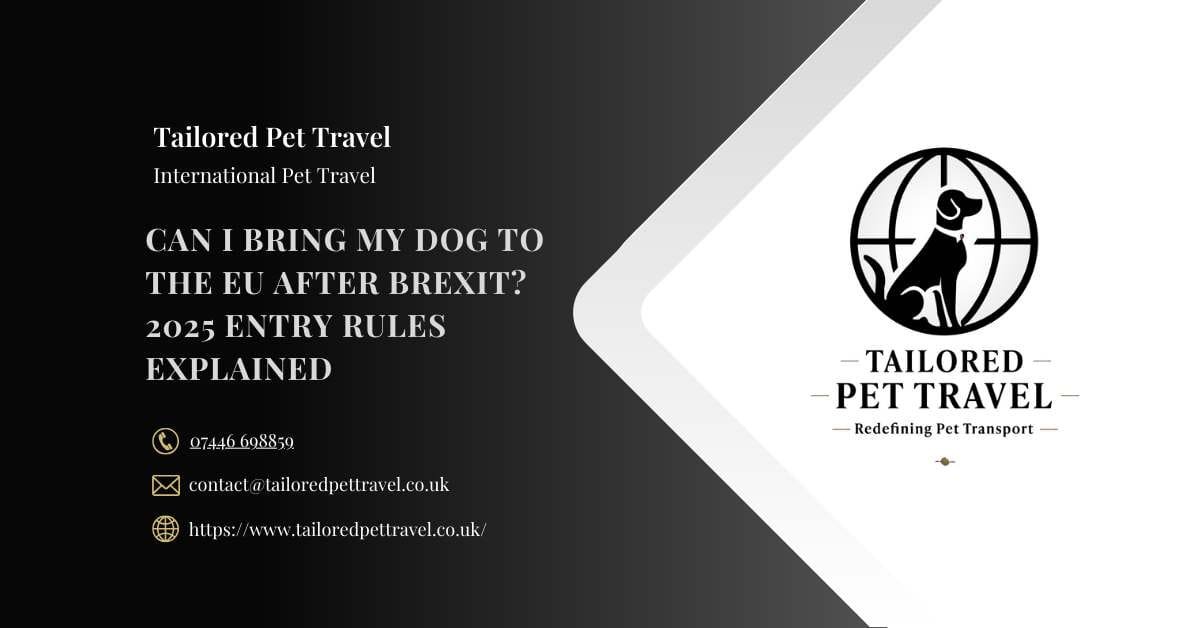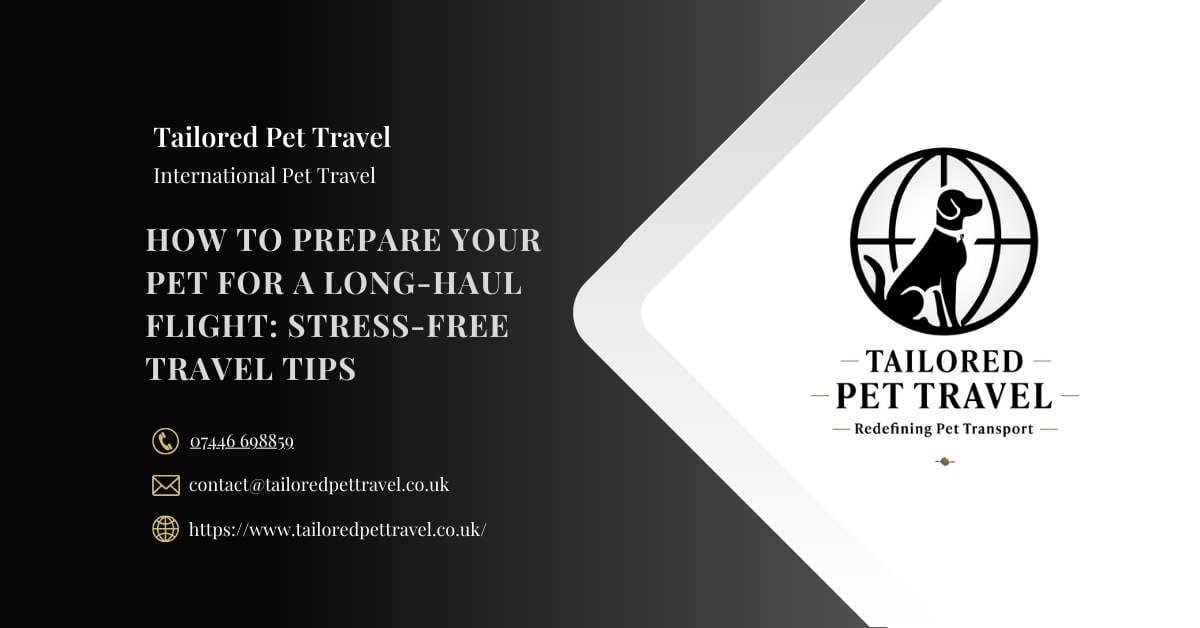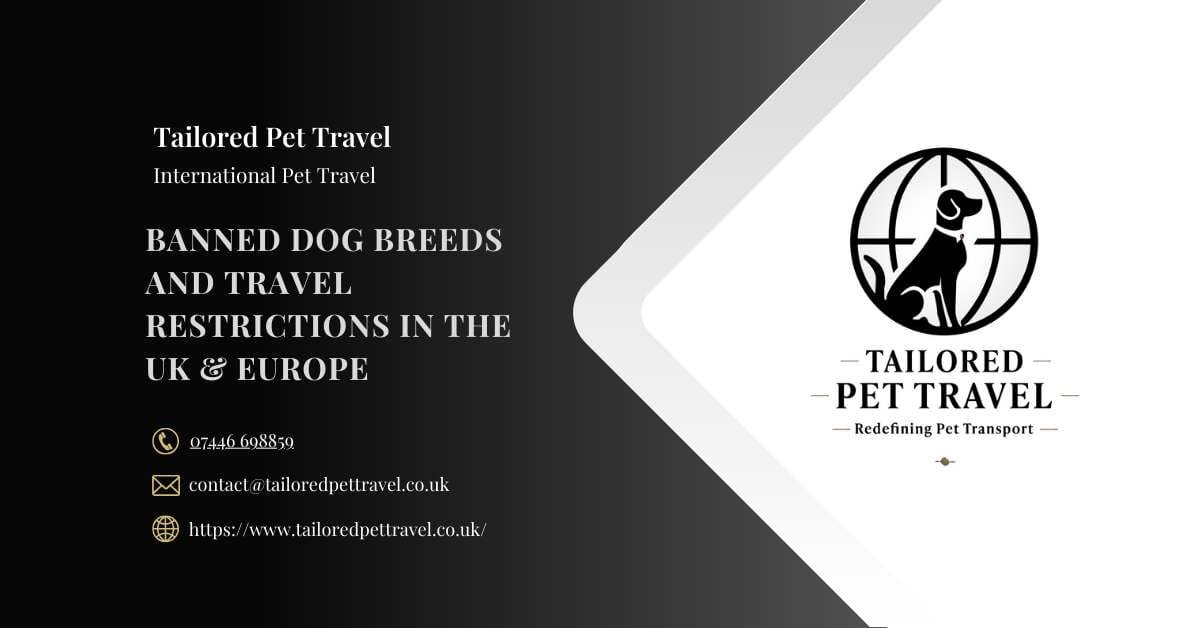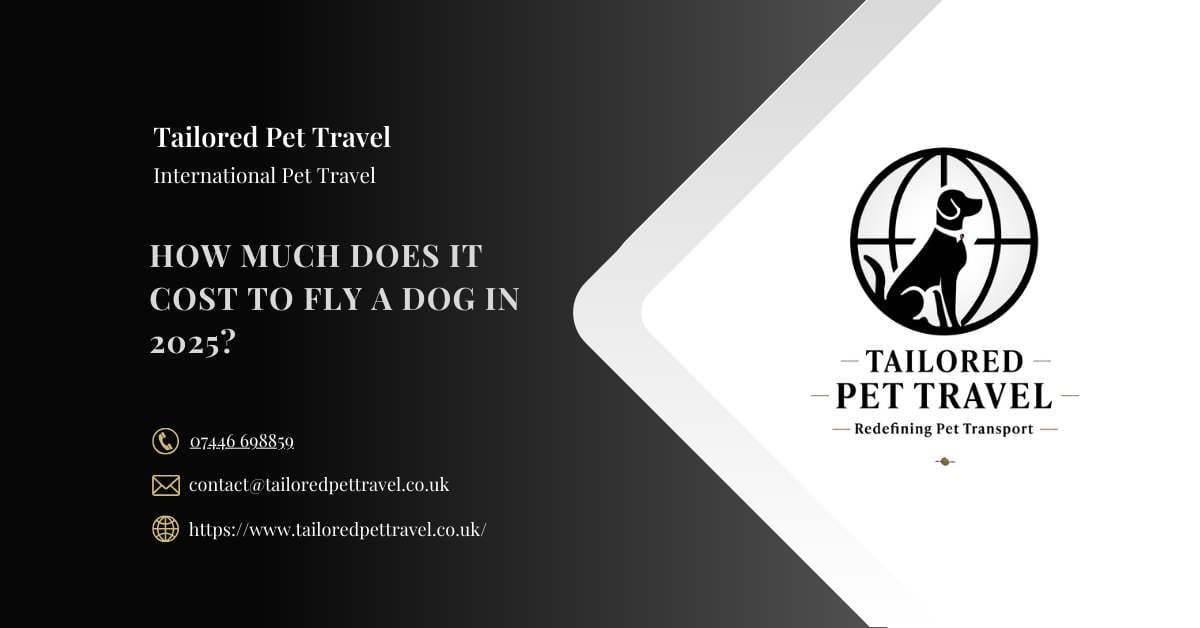How do you keep your pets calm while traveling?
Keeping your pets calm while traveling means understanding their needs, preparing ahead and using effective calming techniques that are suited to the type of transport you are using. Whether it is a short car trip or a longer journey by plane or train, the right approach helps keep anxiety low and your pet more settled.
Here's What We Have Covered In This Article
What are the signs of travel anxiety in pets?
Dogs and cats can show signs of stress in different ways. Dogs may pant, whine, bark or refuse to get in the car. Cats might meow more than usual, crouch in corners or even try to escape from their carriers. In both, you might notice trembling, restlessness, vomiting or changes in toilet habits. Small animals like rabbits or guinea pigs might freeze or hide. Recognising these early can help you take action quickly.
Preparing your pet: how to make travel feel normal
Routine helps pets feel secure. Keep their feeding and walking schedule consistent in the lead up to travel. Get your pet used to their carrier by placing it in the home with the door open and a soft blanket inside. Use treats or praise when they choose to go in or sit near it.
Plan a few short practice journeys. Start with five or ten minutes, ending at a park or a calm place. These short trips can help build a connection between car travel and positive outcomes. Over time, increase the length of the trips.
Packing the right items for a smoother trip
Your pet needs more than just a collar and lead. Bring water, a travel bowl, snacks or treats that are safe for the road, and something that smells like home such as a worn t-shirt. Use pet-safe calming sprays made with synthetic pheromones or herbal extracts if your vet agrees.
If your pet is on medication or has a health condition, pack enough for the trip and keep it in a labelled container. Write down your vet’s number along with a local vet’s contact near your destination.
How can you keep pets calm in the car?
Safety first. Dogs should be in a crate or strapped in with a crash-tested harness. Cats should stay in a carrier placed securely in the footwell behind a front seat. Avoid placing animals in the front seat where airbags may cause harm.
Keep windows cracked for airflow but not wide enough for escape. Avoid loud music or quick braking. Bring your pet’s favourite toy or chew, and stop every couple of hours for a stretch and a drink. Do not leave your pet alone in the vehicle even if it feels cool outside. The temperature inside rises fast.
For dogs that get car sick or overly anxious, speak with your vet. Some dogs respond well to ginger-based biscuits while others may need medication for motion sickness or anxiety.
What is the best way to prepare a pet for flying?
Flying is more intense than car travel. Airlines have different rules about pet carriers and whether animals can stay in the cabin. Check these before booking. Pets flying in the hold need crate training weeks in advance.
Introduce the travel crate gradually. Feed your pet inside it or let them sleep in it overnight. This helps build trust. On travel day, use absorbent bedding, attach a water bottle and include a label with your contact details.
At the airport, stay calm. If you feel tense, your pet is more likely to feel unsettled. Speak gently and avoid loud spaces where possible. A chew or a treat puzzle may distract them while waiting to board.
Using public transport with pets
Trains and buses can be noisy and crowded. For dogs, use a secure lead and a muzzle if required. Cats should remain in a closed carrier. Plan your trip to avoid rush hour and find quieter carriages if allowed.
Check the rules for pets with each transport provider. Some require you to buy a pet ticket or follow strict carrier size rules. Bring water, a clean-up kit and a towel in case of accidents.
How do you travel with puppies and kittens?
Start small. Very young animals get tired quickly and are more sensitive to noise and motion. Feed them early, before travel, so they are less likely to vomit. Use gentle voices, a soft crate or carrier and avoid handling them too much if they are unsettled.
Praise calm behaviour and offer breaks where possible. Puppies will need toilet stops more often. Always bring cleaning items in case of accidents. Young pets may need a comfort toy or blanket with a familiar scent.
Supporting older or unwell pets during travel
Senior pets often need extra rest and more regular stops. If your dog has joint stiffness, provide extra padding in their crate. Keep routines predictable and avoid sudden changes. Check whether they need pain relief before travel.
If your pet takes medication for anxiety, arthritis or other conditions, speak with your vet well in advance. Make sure you have enough supply and carry it in your hand luggage, not checked bags.
What should you do in a travel emergency?
Have a small emergency kit that includes calming spray, disposable gloves, wound cleanser, paper towels and contact information for a local vet at your destination. GPS collars or trackable tags are a good idea, especially for nervous animals who might run.
If your pet becomes distressed in the car, pull over safely. Cover the crate or carrier with a breathable cloth to reduce light and noise. Speak gently and wait for signs of relaxation before moving on. If vomiting or diarrhoea continues, stop and seek a vet’s advice.
Helping pets settle once you arrive
Let your pet explore one room at a time. Avoid loud sounds or groups of people in the first few hours. Keep feeding and walking times similar to home. Use a diffuser with calming scents and leave their blanket or bed nearby.
Cats often hide for a day or two in new places. This is normal. Offer gentle reassurance but do not force them to come out. Dogs may be more clingy. Give them time, affection and familiar activities.
Pet calming products that can help
Some pets benefit from natural calming chews with ingredients like tryptophan or chamomile. Others may do better with a snug wrap or vest that applies gentle pressure. Pheromone sprays mimic natural scents that help animals feel safe.
Avoid giving sedatives unless prescribed. Monitor your pet’s reaction to any new product and adjust if needed. Products are widely available, but not every option suits every pet.
Travel checklist for pet owners
Two weeks before travel
- Visit your vet for a check-up
- Begin crate or carrier training
- Schedule short practice trips
One week before
- Confirm travel rules for your airline or transport
- Double-check vaccination records
- Pack essential items including comfort toys
Day before
- Avoid big meals
- Exercise your pet to reduce energy levels
- Prepare travel bags and emergency kit
Day of travel
- Stick to your routine
- Offer reassurance without overhandling
- Check water supply, ventilation and restraints
Book Expert Pet Travel Planning
Let us help you plan every part of your pet’s journey, from crate training to destination delivery.
Which calming techniques do vets recommend?
Use a soft tone of voice and avoid sudden movements. Bring a favourite blanket or toy. White noise or calming music works well for some animals. If your pet is noise-sensitive, ear muffs or noise-reducing carriers may help.
Practice these techniques before you travel so your pet becomes familiar with them. For long-term anxiety or repeated signs of stress, a professional trainer or veterinary behaviourist may be helpful.
FAQs
- How do I know if my pet is travel-ready? They should be comfortable in a crate or harness, stay calm on short trips, and be able to eat, drink and go to the toilet as usual.
- What is the best calming aid for travel? It depends on the pet. Natural chews, sprays or vests all support relaxation. Speak to your vet for personalised advice.
- Can I fly internationally with my pet? Yes, but you need to follow rules about crate type, vaccination proof and transport approval. Check with your airline well ahead.
- What should I do if my pet gets sick while travelling? Pull over if safe, offer water and calming words. If signs do not pass, contact a local vet quickly.
- How can I help a young dog or cat enjoy travel? Start early with short positive trips. Use praise, treats and routine to build comfort. Avoid loud sounds and long gaps between breaks.
To explore more pet travel tips, advice and product recommendations for smoother pet travel, visit our pet travel advice hub or speak to our team for support.
For the best Dog and Cat Care in the UK – reach out to us now!


